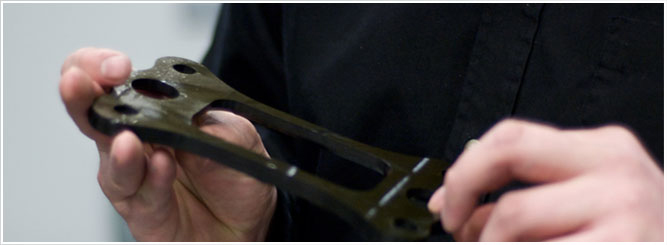
Abrasive Jet Technology vs. Laser Cutting: Which Offers Better Precision and Versatility?
In the world of modern manufacturing and material processing, abrasive jet technology has emerged as a powerful and versatile method for cutting, cleaning, and shaping a wide range of materials. Unlike traditional techniques that rely on heat or mechanical force, abrasive jet technology uses a high-velocity stream of abrasive particles mixed with a fluid, typically water or air, to achieve precise results without thermal distortion. This innovative approach is gaining traction across industries due to its ability to handle complex designs and delicate materials. As businesses seek more efficient and cost-effective solutions, understanding the nuances of abrasive jet technology becomes crucial. In this article, we will delve into multiple aspects of abrasive jet technology, comparing it with other methods like laser cutting to highlight its unique benefits. By exploring its principles, applications, advantages, and more, you’ll gain a comprehensive view of why abrasive jet technology is a game-changer in industrial processes.
What Is Abrasive Jet Technology?
Abrasive jet technology, often referred to as abrasive waterjet cutting or abrasive blasting, is a non-traditional machining process that utilizes a high-pressure stream of abrasive particles—such as garnet or aluminum oxide—suspended in a fluid medium to erode material from a workpiece. This method falls under the category of mechanical energy-based processes, where the kinetic energy of the abrasive particles does the cutting, rather than heat or electricity. The core components of abrasive jet technology include a high-pressure pump, an abrasive delivery system, a nozzle, and a control unit. The fluid, usually water, is pressurized to extreme levels (often up to 60,000 psi or more) and mixed with abrasives in a mixing chamber before being expelled through a fine nozzle. This results in a focused jet capable of cutting through hard materials like metals, ceramics, and composites with remarkable precision. The versatility of abrasive jet technology allows it to be used in various forms, including pure waterjet cutting for softer materials and abrasive-enhanced versions for tougher applications. Historically, abrasive jet technology evolved from early waterjet systems in the mid-20th century, with advancements in pump technology and abrasive materials driving its adoption. Today, it stands as a key player in industries requiring minimal heat-affected zones and high accuracy, making abrasive jet technology a preferred choice for applications ranging from aerospace to art fabrication. By eliminating thermal stress, abrasive jet technology reduces material warping and extends tool life, contributing to its growing popularity.
How Abrasive Jet Technology Works
The operational principle of abrasive jet technology revolves around the conversion of pressure energy into kinetic energy to drive abrasive particles at supersonic speeds. The process begins with a high-pressure pump that intensifies water or air to extreme pressures. This pressurized fluid is then directed through a small orifice, creating a high-velocity stream. In the case of abrasive jet technology, this stream enters a mixing chamber where abrasive particles are introduced from a hopper or feeder. The abrasives are accelerated by the fluid jet, forming a coherent, focused stream that exits through a nozzle, typically made of durable materials like tungsten carbide to withstand erosion. The impact of these high-speed abrasive particles on the workpiece causes micro-erosion, effectively cutting or etching the material without generating significant heat. Key parameters influencing the efficiency of abrasive jet technology include pressure levels, abrasive type and size, nozzle diameter, and standoff distance. For instance, higher pressures and finer abrasives enhance cutting precision, while larger abrasives are suited for faster material removal. The control system in abrasive jet technology allows for computer numerical control (CNC) integration, enabling automated, complex patterns and repeatable results. This makes abrasive jet technology highly adaptable for both prototyping and mass production. Compared to thermal methods like laser cutting, abrasive jet technology avoids heat-related issues such as melting or hardening, preserving material integrity. The absence of chemical reactions in abrasive jet technology also makes it environmentally friendly, as it typically uses natural abrasives and water, reducing hazardous waste. Overall, the mechanics of abrasive jet technology emphasize precision, flexibility, and sustainability, positioning it as a reliable solution for diverse industrial needs.
Applications of Abrasive Jet Technology in Industry
Abrasive jet technology finds extensive applications across various sectors due to its ability to process a wide array of materials without thermal damage. In the aerospace industry, for example, abrasive jet technology is used to cut intricate components from composites, titanium, and other high-strength alloys, where precision and material integrity are critical. The automotive sector leverages abrasive jet technology for shaping body panels, trimming interior parts, and manufacturing engine components, as it minimizes burrs and reduces post-processing needs. In construction and architecture, abrasive jet technology enables the precise cutting of stone, glass, and tiles for decorative elements and structural parts, allowing for custom designs that would be challenging with conventional tools. The electronics industry benefits from abrasive jet technology in prototyping circuit boards and cutting fragile semiconductors, thanks to its cold-cutting nature that prevents electrical damage. Additionally, abrasive jet technology is employed in the medical field for producing implants and surgical instruments from biocompatible materials like stainless steel and plastics, ensuring sterile, high-tolerance outcomes. Beyond cutting, abrasive jet technology is used for surface preparation, such as cleaning corrosion from metal surfaces or etching patterns on glass, demonstrating its versatility. Environmental applications include the decommissioning of nuclear components, where abrasive jet technology safely removes contaminated layers without generating radioactive dust. The adaptability of abrasive jet technology to different scales—from large industrial machines to portable systems—further expands its utility in job shops and creative industries. As industries push for greener practices, abrasive jet technology aligns with sustainability goals by reducing energy consumption and waste, making it a go-to method for modern manufacturing challenges.
Advantages of Abrasive Jet Technology Over Conventional Methods
When compared to traditional machining techniques like laser cutting, plasma cutting, or mechanical milling, abrasive jet technology offers several distinct advantages that enhance efficiency and quality. One of the primary benefits of abrasive jet technology is its ability to perform “cold” cutting, meaning it does not generate heat during the process. This eliminates the heat-affected zone (HAZ) common in thermal methods, preventing material distortion, hardening, or changes in metallurgical properties. For sensitive materials such as plastics, composites, or heat-treated metals, this makes abrasive jet technology ideal for maintaining structural integrity. Another advantage is the versatility of abrasive jet technology in handling a broad spectrum of materials, from soft rubber and foam to hard ceramics and superalloys. Unlike laser cutting, which may struggle with reflective surfaces or thick sections, abrasive jet technology consistently delivers clean cuts regardless of material properties. The precision of abrasive jet technology is also noteworthy; with CNC integration, it can achieve tolerances as tight as ±0.1 mm and produce complex geometries with sharp corners and fine details. This reduces the need for secondary operations, saving time and costs. Additionally, abrasive jet technology is environmentally friendly, as it typically uses water and natural abrasives, minimizing toxic emissions and waste. In terms of safety, abrasive jet technology poses lower risks of fire or fumes compared to thermal processes, enhancing workplace conditions. From an economic perspective, the tool-less nature of abrasive jet technology reduces wear and tear on equipment, leading to lower maintenance costs and longer machine life. While initial setup costs for abrasive jet technology can be higher than some alternatives, the long-term savings in material preservation and efficiency often justify the investment. Overall, the advantages of abrasive jet technology make it a superior choice for applications demanding high precision, material flexibility, and eco-conscious operations.
Limitations and Challenges of Abrasive Jet Technology
Despite its numerous benefits, abrasive jet technology is not without limitations and challenges that users must consider. One significant drawback is the relatively slower cutting speed compared to thermal methods like laser or plasma cutting, especially for thick or hard materials. This can impact productivity in high-volume manufacturing settings, where time efficiency is crucial. Another challenge in abrasive jet technology is the wear and tear on components, particularly the nozzle and mixing tubes, due to the abrasive nature of the stream. This necessitates frequent replacements and maintenance, adding to operational costs and downtime. The consumption of abrasives and water in abrasive jet technology also contributes to ongoing expenses and environmental concerns, such as slurry disposal. While the process itself is clean, the waste slurry—a mixture of water, abrasives, and eroded material—requires proper treatment to avoid contamination, which can complicate compliance with environmental regulations. Noise levels generated by abrasive jet technology systems can be high, potentially exceeding safety standards and requiring soundproofing measures in industrial environments. Additionally, the accuracy of abrasive jet technology can be affected by factors like nozzle clogging or variations in abrasive flow, demanding skilled operators and regular calibration to maintain consistency. In terms of cut quality, abrasive jet technology may produce tapered edges or slight surface roughness in some materials, which might need finishing steps. However, advancements in abrasive jet technology, such as improved nozzle designs and automated controls, are addressing these issues. For instance, newer systems incorporate real-time monitoring to optimize abrasive usage and reduce waste. By understanding these limitations, businesses can better integrate abrasive jet technology into their processes, leveraging its strengths while mitigating challenges through proper planning and technology upgrades.
Future Trends in Abrasive Jet Technology
The future of abrasive jet technology looks promising, driven by innovations aimed at enhancing efficiency, sustainability, and accessibility. One emerging trend is the integration of Industry 4.0 technologies, such as IoT sensors and AI, into abrasive jet technology systems. These enable predictive maintenance, real-time process optimization, and data analytics to reduce downtime and improve cut quality. For example, smart abrasive jet technology machines can automatically adjust parameters based on material feedback, maximizing precision and minimizing waste. Another development is the push toward greener abrasive jet technology solutions, including the use of recycled abrasives and water recycling systems to lower environmental impact. Researchers are also exploring new abrasive materials derived from sustainable sources, such as agricultural waste, to make abrasive jet technology more eco-friendly. In terms of applications, abrasive jet technology is expanding into additive manufacturing and hybrid processes, where it complements 3D printing by post-processing printed parts or creating intricate molds. The miniaturization of abrasive jet technology equipment is opening doors for portable and desktop versions, making it accessible to small businesses and educational institutions. Additionally, advancements in pressure technology are increasing the capabilities of abrasive jet technology, allowing for higher pressures that boost cutting speeds and extend the range of processable materials. Collaborations between academia and industry are fueling R&D in abrasive jet technology, focusing on reducing costs and improving user-friendliness. As global industries emphasize customization and rapid prototyping, abrasive jet technology is poised to play a pivotal role in agile manufacturing. By staying abreast of these trends, businesses can harness the full potential of abrasive jet technology to stay competitive in a dynamic market.
Frequently Asked Questions About Abrasive Jet Technology
Q1: What is abrasive jet technology used for?
A1: Abrasive jet technology is primarily used for cutting, drilling, and surface treatment of various materials, including metals, ceramics, glass, and composites. Its applications span industries like aerospace, automotive, construction, and electronics, where precision and minimal heat damage are essential.
Q2: How does abrasive jet technology differ from waterjet cutting?
A2: While both use high-pressure fluid streams, waterjet cutting relies solely on water for softer materials, whereas abrasive jet technology incorporates abrasive particles mixed with the fluid to cut harder materials. This makes abrasive jet technology more versatile for tough applications.
Q3: What are the main advantages of using abrasive jet technology?
A3: The key advantages of abrasive jet technology include cold cutting without heat-affected zones, ability to process a wide range of materials, high precision, environmental friendliness, and reduced need for secondary finishing operations.
Q4: What materials can be processed with abrasive jet technology?
A4: Abrasive jet technology can handle virtually any material, from soft plastics and rubber to hard metals like titanium and ceramics. It is particularly effective for materials sensitive to heat or those with complex geometries.
Q5: What are the common challenges associated with abrasive jet technology?
A5: Challenges include slower cutting speeds for thick materials, component wear due to abrasives, noise levels, waste slurry disposal, and the need for regular maintenance. However, ongoing advancements are mitigating these issues.
In conclusion, abrasive jet technology stands out as a versatile and efficient method in modern manufacturing, offering unique benefits over traditional techniques. By understanding its principles, applications, and future directions, industries can leverage abrasive jet technology to achieve superior results.
continue reading
Related Posts
- 1379 words6.9 min read



